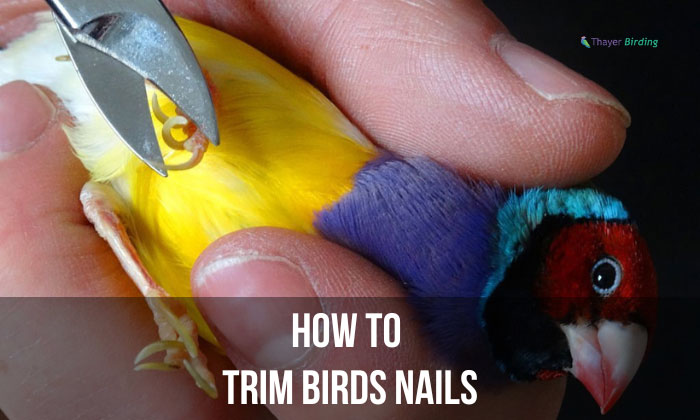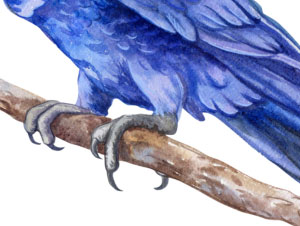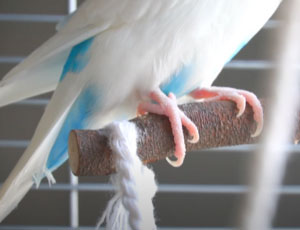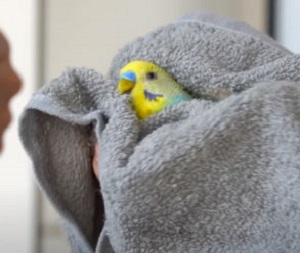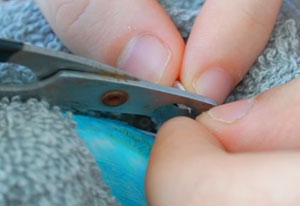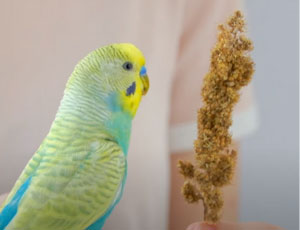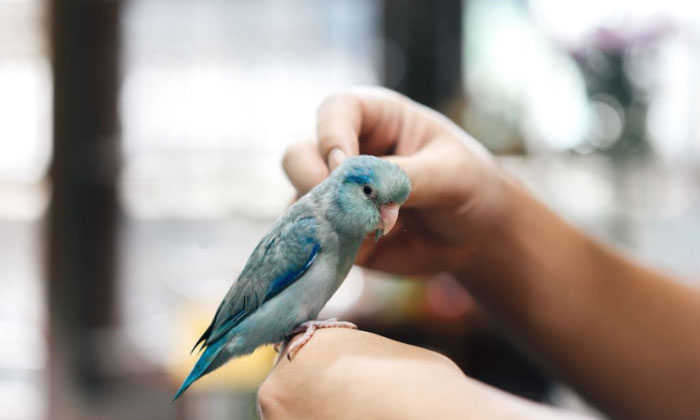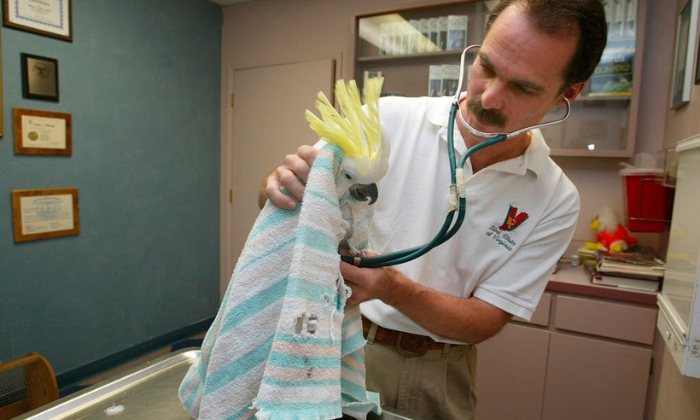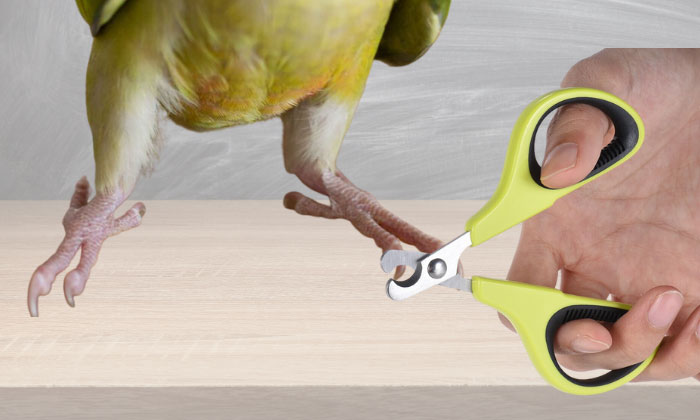Nails are necessary for birds to maintain their balance. However, if their nails get too long, they may have difficulty perching or wound themselves while scratching itches. Not to mention that they may scratch you and your furniture, too!
There are only four steps in the discussion of how to trim birds nails by yourself: preparation, holding your bird properly, clipping its nails, and the post-cutting reward treat.
It is useful, though, to also understand extra things like the importance of having styptic powder on hand and what the bird nail “quick” is.
Read on to learn more!
Table of Contents
How to Trim Birds’ Nails: A Step-by-step Guide
What to prepare
- White or light-colored towel since a brightly colored towel may scare your bird.
- Styptic powder to staunch any bleeding immediately. Flour, baking soda, or cornstarch are possible alternatives.
- Bird nail clippers suitable to your bird’s size. Small birds may use human nail clippers, but bigger birds may need a heavier-duty pair. If possible, invest in a battery-operated pet nail trimmer, which eliminates the risks of cutting into the bird’s nerves and blood vessels.
Anatomy of Bird Nails
Before attempting to cut your pet bird’s nails, it will be helpful to understand its anatomy to grasp the importance of being careful.
Like our nails, bird nails are made out of keratin. The keratin houses the quick – a combination of blood vessels, nerves, and fat cells.
When cutting your bird’s nails, particularly if it has dark nails and no visible quick, it is vital to be careful. As small animals, birds do not have much blood–losing only a few milliliters may be all it takes to bleed to death.
Additionally, their blood has very few clotting agents. Their wounds heal extremely slowly, so even a small cut can be life-threatening.
Nails of Different Bird Species
Not all birds share the same claw and nail type. Here are some notable examples:
- Pigeon claws are non-transparent, curved, and sharp with serrated edges.
- Ostriches have extremely large nails that play an important role in helping them run faster–up to 45 miles an hour, to be precise!
- Woodpeckers have short, strong, and sharp nails. This, together with their unique toe arrangement of two facing front and two facing back, enables them to grip tree trunks and branches very firmly.
- Swallows have tiny nails with blunt ends. Like other perching birds, their toes (and nails) are arranged as three in front and one at the back.
- Parakeet nails are very sharp! They also grow very quickly, requiring owners to be constantly vigilant. Despite that, parakeets know how to gently grip their humans without harming them.
Steps to Trim Birds’ Nails
Here is a step-by-step guide for trimming your bird’s nails yourself.
Step 1: Prepare your materials, your bird, and yourself
There are three main things to prepare: your materials, your pet, and yourself.
Ensure your towel, styptic powder, and clipper are ready to make the process as quick and efficient as possible.
Also, ensure that your bird has sufficiently been prepped. This requires developing a bond with it so it is comfortable in your presence and exposing it to the towel regularly beforehand so it will not get startled by its appearance or texture.
It is discouraged to trim untamed budgie nails since they might become overstressed.
Lastly, ensure that you are ready for this ordeal. Any fear or hesitation on your part will be felt and reciprocated by your pet. Being calm and confident will help you both!
Step 2: Hold your bird steady
Wrap your bird gently in a towel but don’t cover its face or feet. Hold it firmly on its sides–never on its chest–and restrain its head so it won’t bite you.
To do this comfortably, experts recommend gently holding the sides of its head with your non-dominant hand’s thumb and middle finger. Your index finger will be used to keep its head steady.
It’s possible to ask someone else to hold the bird for you to make it easier to cut overgrown bird nails, provided the bird is also familiar with that person.
Step 3: Clip its nails
The quickest way to clip your bird’s nails is to let it hold onto your index finger as if it were perching.
Once its claws are curved over your index finger, gently push the toe upward to expose the nail. Take a moment to spot the quick and, once you know how deep you can go, start clipping bird nails.
- If your bird is panting, squirming excessively, or its eyes are rolling back into its head, release it and place it back in its cage. Its stress levels are too high, and it would be better for it to calm down first before proceeding.
- If you accidentally cut into the quick and your bird’s nail begins to bleed, apply styptic powder, flour, or cornstarch immediately. Then, bring your pet to the vet to ensure no further complications develop.
Step 4: Reward your pet
If nothing goes wrong and you make it to this point, congratulations! You’re successful in your efforts to trim overgrown bird nails!
Ensure you reward your bird with a small treat and congratulatory words to train it to associate nail-clipping sessions with good feelings in the future.
Best Practices for Bird Nail Trimming
Working swiftly but carefully is always best when trimming your bird’s nails. The longer you take, the more anxious your bird will become.
Start cutting your bird’s nails and getting it comfortable with you handling its feet while it is still young. This allows it to become comfortable with the practice, giving you fewer problems later.
However, the best tip may be to install a sand or pumice stone perch (aside from its wooden perch) in its cage. This way, your bird can file its own nails and lessen the number of times you need to intervene.
As a note, cement perches are discouraged since these can dry out your bird’s feet pads.
Tips for Calming Your Bird During Nail Clipping
The first thing you can do to keep your bird calm during nail clipping is to be confident in yourself. As mentioned earlier, your bird can sense anxiety, so emitting confidence can change how your pet reacts to the procedure.
Talk to your bird in soft, soothing tones throughout the nail clipping. Your voice will calm it. Covering your bird in a plain towel is another effective way to soothe it.
Make sure the environment is calm and quiet. Don’t clip its nails when there are nearby loud noises or visible prowling cats nearby, for example.
Lastly, constantly monitor your bird. Once it shows signs of extreme distress, respond immediately by stopping and changing the activity. It will calm your bird to know you are attentive to its feelings.
Additionally, since bleeding is a significant concern, always have styptic powder ready or cauterize the wound by quickly pressing a hot match to the cut nail. To prevent bleeding in the first place, only cut the tip of your bird’s nails each time; after all, it’s always better to trim too little than too much.
Care Guide After Trimming
Little aftercare is needed for birds after trimming. Typically, all you need to do is give it a congratulatory treat and allow it to resume regular activities!
Frequently Asked Questions
When should you trim a bird’s nails, and how often?
Generally, your bird should be able to stand with its feet flat on a surface. You will know its nails are too long if the tips of its toes begin pointing upward.
Long nails may result in parrot nails curling, giving the bird difficulty walking and perching.
How often is a question that differs per individual. If your bird has a pumice stone bird nail trimming perch, it’s possible for you never to need to clip birds nails.
How do birds naturally trim their nails?
Why do you have to trim bird nails at all? How do wild birds do it?
In the wild, birds’ nails are naturally kept short as they walk over or perch on rough surfaces like the ground, rocks, and tree bark. Those with strong beaks, such as parrots, may gnaw at their own claws to keep the nails from overgrowing as well.
Birds in captivity do not always have access to these rough surfaces and occasionally need human-owner intervention.
Where can I get my bird’s nails clipped?
If you are uncomfortable cutting birds nails, you can take it to your vet. Alternatively, some pet stores, such as Petsmart, may offer the service.
When should I seek professional help?
You should take your bird to the vet to have its nails clipped if you need more confidence or if it shows too many signs of distress when attempting to do it yourself.
These include:
- Squirming excessively
- Panting or having difficulty breathing
- Eyes rolling back in its head
Conclusion
How to trim birds nails is a simple matter, but many bird owners become anxious because they fear cutting into the quick and harming their pets.
For first-timers, it’s advisable to watch a professional do it first so you can get a clear example.
After that, it’s simply a matter of practice for you and your bird. After a few sessions, you will both face the task with little to no fear at all!

George and I became friends after a birdwatching trip with our new group. And we have been enjoying every adventure together. When he told me the idea of establishing a site that shares our experiences and fun, I immediately agreed. After trials and errors, here we have Thayerbirding.


